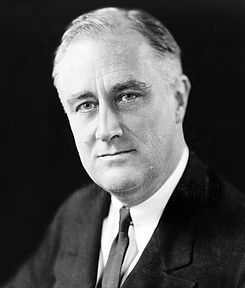This is your morning Open Thread. Pour your favorite beverage and review the past and comment on the future.
Find the past “On This Day in History” here.
July 19 is the 200th day of the year (201st in leap years) in the Gregorian calendar. There are 165 days remaining until the end of the year.
On this day in 1848, a two-day Women’s Rights Convention opens in Seneca Falls, New York. There the “Bloomers” are introduced.
The Seneca Falls Convention was an early and influential women’s rights convention held in Seneca Falls, New York, July 19-20, 1848. It was organized by local New York women upon the occasion of a visit by Boston-based Lucretia Mott, a Quaker famous for her speaking ability, a skill rarely cultivated by American women at the time. The local women, primarily members of a radical Quaker group, organized the meeting along with Elizabeth Cady Stanton, a skeptical non-Quaker who followed logic more than religion.
The meeting spanned two days and six sessions, and included a lecture on law, a humorous presentation, and multiple discussions about the role of women in society. Stanton and the Quaker women presented two prepared documents, the Declaration of Sentiments and an accompanying list of resolutions, to be debated and modified before being put forward for signatures. A heated debate sprang up regarding women’s right to vote, with many including Mott urging the removal of this concept, but Frederick Douglass argued eloquently for its inclusion, and the suffrage resolution was retained. Exactly 100 of approximately 300 attendees signed the document, mostly women.
The convention was seen by some of its contemporaries, including featured speaker Mott, as but a single step in the continuing effort by women to gain for themselves a greater proportion of social, civil and moral rights, but it was viewed by others as a revolutionary beginning to the struggle by women for complete equality with men. Afterward, Stanton presented the resulting Declaration of Sentiments as a foundational document in the American woman’s suffrage movement, and she promoted the event as the first time that women and men gathered together to demand the right for women to vote. Stanton’s authoring of the History of Woman Suffrage helped to establish the Seneca Falls Convention as the moment when the push for women’s suffrage first gained national prominence. By 1851, at the second National Women’s Rights Convention in Worcester, Massachusetts, the issue of women’s right to vote had become a central tenet of the women’s rights movement.

 Roosevelt was born January 30, 1882, in Hyde Park, New York, and went on to serve as a New York state senator from 1911 to 1913, assistant secretary of the Navy from 1913 to 1920 and governor of New York from 1929 to 1932. In 1932, he defeated incumbent Herbert Hoover to be elected president for the first time. During his first term, Roosevelt enacted his New Deal social programs, which were aimed at lifting America out of the Great Depression. In 1936, he won his second term in office by defeating Kansas governor Alf Landon in a landslide.
Roosevelt was born January 30, 1882, in Hyde Park, New York, and went on to serve as a New York state senator from 1911 to 1913, assistant secretary of the Navy from 1913 to 1920 and governor of New York from 1929 to 1932. In 1932, he defeated incumbent Herbert Hoover to be elected president for the first time. During his first term, Roosevelt enacted his New Deal social programs, which were aimed at lifting America out of the Great Depression. In 1936, he won his second term in office by defeating Kansas governor Alf Landon in a landslide.
Recent Comments